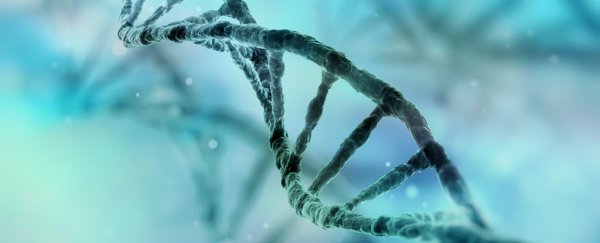A large international study of the genes that predispose people to autism spectrum disorders ( ASD) suggests that the same gene variants are also present in the wider population, where they can contribute to a range of behavioural and developmental traits with lesser severity than clinical ASD.
According to the researchers, there's no real cut-off point on the autism spectrum – rather, it's a continuum of complex genetic factors that can affect our behaviour. But for a small percentage of the community who have more of certain gene variants than others, this gives them a greater likelihood of demonstrating the social and behavioural traits recognised as clinical ASD.
"This is the first study that specifically shows that [genetic] factors that we have unambiguously associated with autism are also very clearly associated with social communication differences in the general population," geneticist Elise Robinson from Harvard University told Nicola Davis at The Guardian.
"The primary implication is that the line at which we say people are affected or unaffected is arbitrary," she added. "There is no clear objective point either in terms of genetic risk or in terms of behavioural traits, where you can say quite simply or categorically that you're affected or unaffected. It's like trying to pick a point where you say someone is tall or not."
Autism spectrum disorders – which include autism, Asperger syndrome and unspecified pervasive developmental disorders – affect about 1 in 100 children. Symptoms include social interaction difficulties, communication impairments, and stereotyped or repetitive behaviour.
But while only 1 in 100 children may be clinically diagnosed with ASD, the implications of the study – published in Nature Genetics – are that these children represent just the "severe tail" of a range of behavioural and developmental traits also found in the broader population.
How do the scientists know this? By comparing data on some 38,000 individuals sourced from a number of studies on cohorts of both ASD-affected and unaffected individuals. By studying polygenic risk factors (small effects of thousands of genetic differences, distributed across the genome) and de novo risk factors (rare genetic variants of large effect), in these data sets, the continuum of ASD-related traits became clear.
"There has been a lot of strong but indirect evidence that has suggested these findings," said researcher Mark Daly, co-director of the Broad Institute's Medical and Population Genetics (MPG) program. "Once we had measurable genetic signals in hand – both polygenic risk and specific de novo mutations known to contribute to ASD – we were able to make an incontrovertible case that the genetic risk contributing to autism is genetic risk that exists in all of us, and influences our behaviour and social communication."
However, just because everybody carries some degree of genetic risk when it comes to ASD gene variants, doesn't mean we all would find social interactions difficult to some extent, nor that people's genetic makeup is the only reason they might develop ASD.
"This research suggests that studies of the autistic population can gain from integrating studies of the general population, and so adds to the evidence that autism involves many complex and interacting factors including genetics, the environment and the development of the brain," Carol Povey, director of the National Autistic Society Centre for Autism, who was not involved with the research, told The Guardian. "While this research refers to 'autism-related' traits in the general population, people should not take away the message that 'we're all a little bit autistic'."
Rather, what the study gives us, according to its authors, is a broader framework in which to examine how ASD comes to be. "A continuum model should inform the design and interpretation of studies of neuropsychiatric disease biology," they write in Nature Genetics.
"We can use behavioural and cognitive data in the general population to untangle the mechanisms through which different types of genetic risk are operating, " said Robinson. "We now have a better path forward in terms of expecting what types of disorders and traits are going to be associated with certain types of genetic risk."
